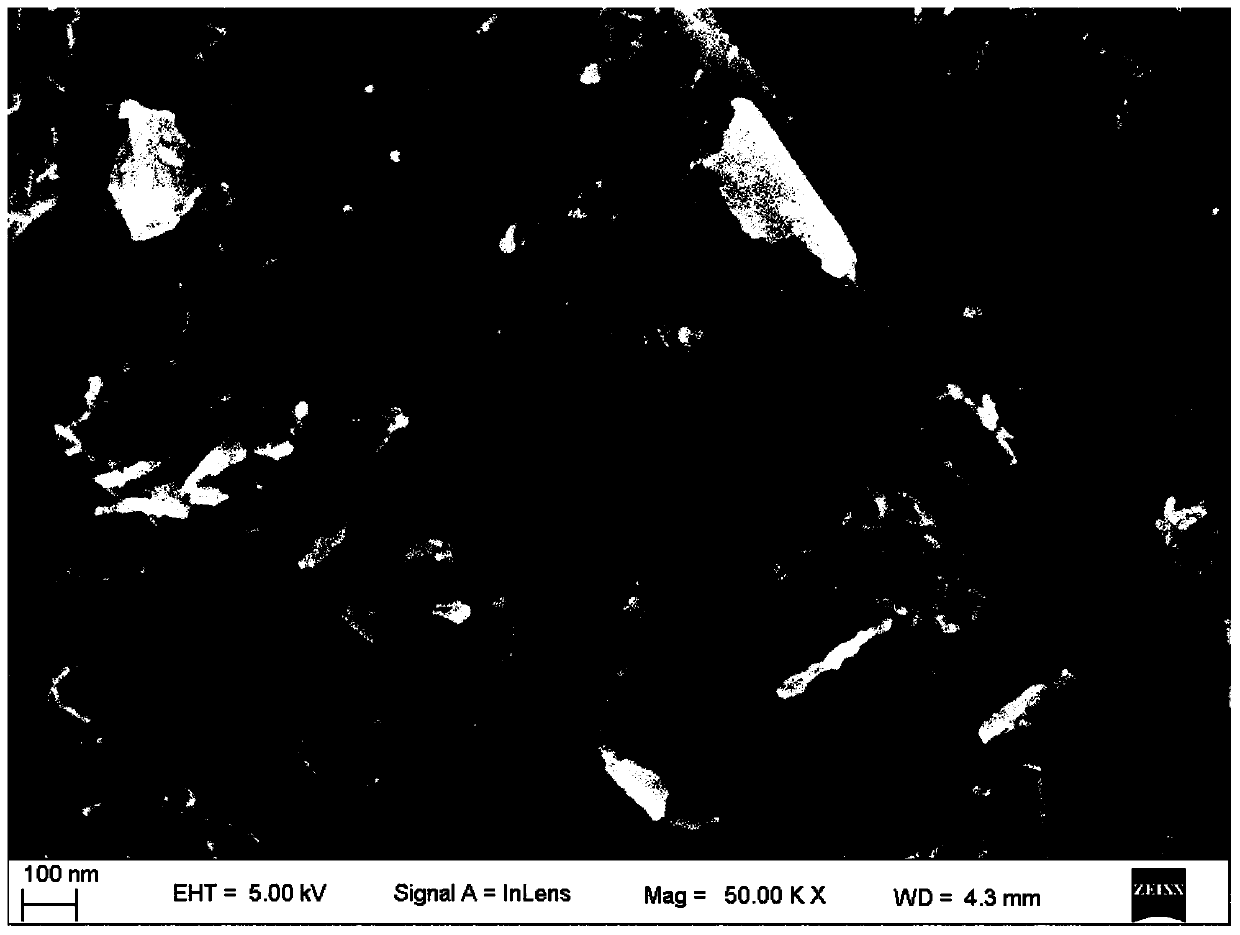Composite nanomaterial and preparation method and application thereof
A technology of composite nanomaterials and nanosheets, applied in the field of composite materials, can solve the problems of high cost and low detection sensitivity, and achieve the effect of mild and controllable reaction conditions, simple preparation method, and enhanced SERS signal
- Summary
- Abstract
- Description
- Claims
- Application Information
AI Technical Summary
Problems solved by technology
Method used
Image
Examples
Embodiment 1
[0045] A composite nanomaterial composed of two-dimensional MXene nanosheets and one-dimensional gold nanorods through electrostatic adsorption.
[0046] The preparation method of this composite nanomaterial comprises the following steps:
[0047] (1) Preparation of two-dimensional MXene nanosheets:
[0048] Under anaerobic conditions, take the multi-layer MXene powder, disperse the multi-layer MXene powder in N-methylpyrrolidone to obtain a dispersion with a concentration of 1.0 mg / mL, and perform probe ultrasonication on the dispersion at a power of 1000W for 10 hours , followed by ultrasonication in a water bath at a power of 300W for 10h. After ultrasonication, centrifuge at 3500rpm / 10min to collect the supernatant to obtain two-dimensional MXene nanosheets. After centrifugation again at 10000rpm / 10min, the precipitate was dispersed in 1mL of water.
[0049] (2) Preparation of one-dimensional gold nanorods:
[0050] Gold nanorods were synthesized by a one-step method. U...
Embodiment 2
[0059] A method for preparing a composite nanomaterial for pesticide trace detection, comprising the following steps:
[0060] (1) Preparation of two-dimensional MXene nanosheets:
[0061] Under anaerobic conditions, take multi-layer MXene powder, disperse multi-layer MXene powder in the first organic solvent to obtain a dispersion with a concentration of 0.5 mg / mL, and perform probe ultrasonication on the dispersion at a power of 700W 8h, followed by ultrasonication in a water bath for 8h at a power of 400W. After ultrasonication, centrifuge at 3500rpm / 10min to collect the supernatant to obtain two-dimensional MXene nanosheets. After centrifugation again at 10000rpm / 10min, disperse the precipitate in 0.5mL water .
[0062] (2) Preparation of one-dimensional gold nanorods:
[0063] Gold nanorods were synthesized by a one-step method. Under room temperature conditions, the chloroauric acid solution with a concentration of 0.004mol / L, the hexadecyltriethylammonium bromide wit...
Embodiment 3
[0071] A method for preparing a composite nanomaterial for pesticide trace detection, comprising the following steps:
[0072] (1) Preparation of two-dimensional MXene nanosheets:
[0073] Under anaerobic conditions, take multi-layer MXene powder, disperse multi-layer MXene powder in the first organic solvent to obtain a dispersion with a concentration of 0.75 mg / mL, and perform probe ultrasonication on the dispersion at a power of 1400W 5h, followed by water-bath ultrasonication at a power of 200W for 6h. After ultrasonication, centrifuge at 3500rpm / 10min, collect the supernatant to obtain two-dimensional MXene nanosheets, and then centrifuge again at 10000rpm / 10min, and disperse the precipitate in 2mL of water.
[0074] (2) Preparation of one-dimensional gold nanorods:
[0075] Gold nanorods were synthesized by a one-step method. Under room temperature conditions, concentration is the chloroauric acid solution of 0.004mol / L, the hexadecyltriethylammonium bromide that conce...
PUM
| Property | Measurement | Unit |
|---|---|---|
| length | aaaaa | aaaaa |
| thickness | aaaaa | aaaaa |
| length | aaaaa | aaaaa |
Abstract
Description
Claims
Application Information
 Login to View More
Login to View More - R&D
- Intellectual Property
- Life Sciences
- Materials
- Tech Scout
- Unparalleled Data Quality
- Higher Quality Content
- 60% Fewer Hallucinations
Browse by: Latest US Patents, China's latest patents, Technical Efficacy Thesaurus, Application Domain, Technology Topic, Popular Technical Reports.
© 2025 PatSnap. All rights reserved.Legal|Privacy policy|Modern Slavery Act Transparency Statement|Sitemap|About US| Contact US: help@patsnap.com



